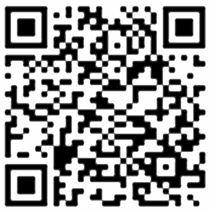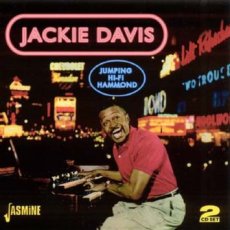
Daily Dose Of Jazz…
Jackie Davis was born on December 13, 1920 in Jacksonville, Florida. He first learned to play by spending hours poking at his grandmother’s piano. By the age of eight, he was playing with a local dance band. By the age of eleven, he’d earned enough from playing to buy his own piano, and music enabled him to pay his way through Florida A&M College, graduating in 1943.
After serving time in the Army, he worked as a pianist, usually as an accompanist for singers such as Dinah Washington, Sarah Vaughan, and Billy Daniels. Although he was attracted to the organ, he was intimidated at the prospect of playing jazz on it, particularly when his idol at the time was the lightning-fast Art Tatum. However, the Hammond Organ Company began selling electric organs in the late 40s, and in 1951 he bought his first organ. He appeared at Club Harlem in Philadelphia, and a two-week gig turned into nearly five months. Jackie became the first musician to popularize jazz on the Hammond organ, years before Jimmy Smith’s name became synonymous with organ jazz.
Davis signed with RCA to record a couple of 45s but no album so he went to Trend Records in Los Angeles and released a 10” album. He joined Louis Jordan’s outfit and learned stage presentation and in 1956 signed with Capitol Records, became their leading performer on the organ at a time when relatively few mainstream labels were willing to put a black musician on the cover of an album and released a total of nine albums. He went on to sign with Warner but that proved to be the end of his recording career.
Over the next thirty years of his career he performed in clubs from Vegas to Atlantic City, jazz festivals and restaurants, produced Ella Fitzgerald records, and was hired by Norman Granz for her Lady Time session, and was a regular fixture at a Hilton Head, South Carolina club. He worked with the likes of Paul Quinichette, Junior Mance, Eddie “Lockjaw” Davis, Clark Terry, Ray Brown, Keter Betts, Max Roach and many others.
In 1992 Hurricane Andrew wiped out his home in Florida causing a financial and physical strain on his health and he suffered a series of strokes. He attempted to perform but his health didn’t hold up and on November 15, 1999 pianist and organist Jackie Davis passed away in his hometown of Jacksonville.
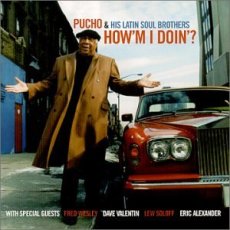
Daily Dose Of Jazz…
Pucho was born Henry Lee Brown on November 1, 1938 in New York City. Living in Harlem he cultivated a love for jazz, rhythm and blues, and mambo and largely self-taught imitating his favorite musician, Tito Puente. He started playing timbales professionally in New York City at the age of sixteen in bands led by Joe Panama in Harlem and the Bronx.
He formed his own band, Pucho & His Latin Soul Brothers in 1959 as a Latin jazz, soul jazz and R&B group and appeared at Count Basie’s club and a Carnegie Hall festival. Over the course of the group’s tenure of thirteen years, of the many musicians that worked in his group, Chick Corea is listed among them.
From 1966 until ’74 he recorded a series of albums for Prestige Records, and due to their musical range recorded with George Benson, Lonnie Smith and Gene Ammons. Disbanding the group in the mid Seventies he concentrated on more traditional Latin music. During the late ‘70s and ‘80s he worked the Catskill Mountain resorts with a small trio until a resurgence of interest through the acid-jazz movement in the Nineties gave way for him to re-form the group and tour Britain and Japan.
Pucho, the timbales player who just may have been to eclectic for a wider jazz audience acceptance, has since released new material, had his early material reissued and continues to perform.
More Posts: timbales
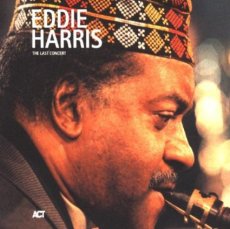
Daily Dose Of Jazz…
Eddie Harris was born on October 20, 1934 in Chicago, Illinois to a Cuban father and New Orleans mother. He studied music at DuSable High School, then Roosevelt University becoming proficient on piano, vibraphone and tenor saxophone and playing professionally with Gene Ammons.
After graduating and a stint in the 7th Army Band playing alongside Leo Wright, Don Ellis and Cedar Walton, he worked in New York City prior to his Chicago return. He signed with Vee Jay Records and released his debut “Exodus To Jazz” and his jazz arrangement of the theme to Exodus was so heavily played on radio, it became the first jazz record ever to be certified gold.
Throughout his career he recorded for Columbia and Atlantic Records, ventured into electric piano and Varitone saxophone mixing jazz with funk on albums like “The Electrifying Eddie Harris” and crossing into rhythm and blues markets. By 1969 he would perform with Les McCann at Montreux with an unrehearsed band that produced the seminal work Swiss Movement that became one of the best selling jazz albums ever.
In the early to mid ‘70s Harris experimented with altering instruments like his reed trumpet with a sax mouthpiece, saxobone with a trombone mouthpiece and guitorgan, a guitar/organ combination. He also forayed into singing blues, played with jazz-rock, and comic R&B consisting of mostly stand-up comedy all of which ultimately declined his popularity.
He would work with Horace Silver in the ‘80s, record regularly well into the 1990s, tour and perform in Europe and return to hard bop. His move to Los Angeles in the mid-1970s allowed him the opportunity to provide much of the music for The Bill Cosby Show.
Eddie Harris, tenor saxophonist and multi-instrumentalist and composer of “Freedom Jazz Dance” popularized by Miles Davis in the Sixties and also the tune “Listen Here”, passed away from bone cancer and kidney disease at the age of 62 on November 5, 1996.
More Posts: organ,piano,saxophone,vibraphone
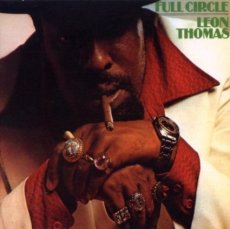
Daily Dose OF Jazz…
Amos Leon Thomas Jr was born on October 4, 1937 in East St. Louis, Illinois. He studied music at Tennessee State University and went on to become the vocalist for Count Basie and others in the Sixties. In 1969, Leon released his first solo album for the prestigious Flying Dutchman label, however, an earlier album he recorded still remains unreleased.
Thomas is best known for his work with Pharoah Sanders, particularly the 1969 song “The Creator Has a Master Plan” from the Karma album. His most distinctive attribute was that he often broke out into yodeling in the middle of a vocal, developed after he fell and broke his teeth before a show. This style influenced singers James Moody and Tim Buckley.
Thomas toured and recorded as a member of the band Santana in 1973 but was largely forgotten until a resurgence of interest in soul jazz and several of his tracks have been sampled in hip-hop and down-tempo records. Leon Thomas, jazz singer, often in the avant-garde genre, died of heart failure on May 8, 1999.
More Posts: vocal
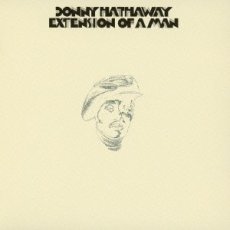
Daily Dose OF Jazz…
Donny Edward Hathaway was born on October 1, 1945 in Chicago, Illinois and was raised by his grandmother in the projects of St. Louis, Missouri. He began singing at age three in a church choir with his grandmother, a professional gospel singer. Graduating from high school he studied music at Howard University. Forming a jazz trio to work around D.C. but left Howard in 1967 without a degree, after receiving job offers in the music business.
Hathaway worked as songwriter, session musician and producer in Chicago at Twinight Records, arranged for The Unifics, worked with the Staple Singers, Jerry Butler, Aretha Franklin, The Impressions and Curtis Mayfield. He became house producer for Curtom Records, recorded as a member of the Mayfield Singers and dropped his first single “The Ghetto” in 1970. He recorded several albums following this debut.
Donny went on to contribute to soundtracks, recorded the theme to the TV series Maude, composed and conducted the soundtrack for the 1972 film Come Back Charleston Blue and wrote several hits such as his collaboration with Roberta Flack – Where Is The Love – that garnered them both a Grammy and This Christmas that has become a seminal holiday song.
However, genius has its detractors and during the best part of his career he began to suffer from severe bouts of depression and was found suffering from paranoid schizophrenia. On January 13, 1979 the body of Donny Hathaway was discovered on the sidewalk outside the luxury Central Park South hotel Essex House in New York City. His death was ruled a suicide.


